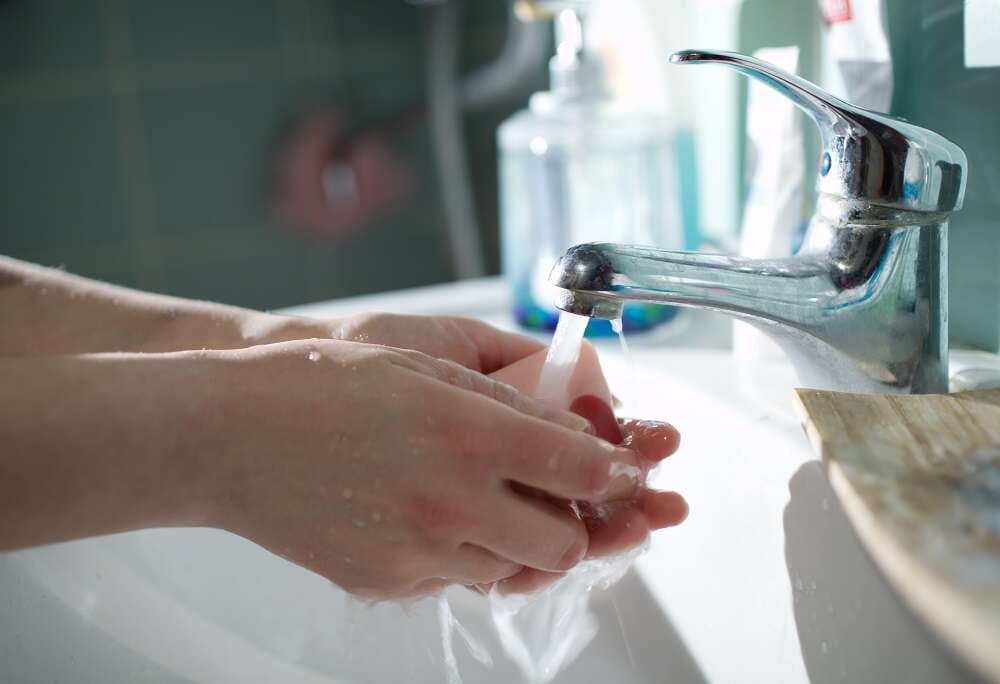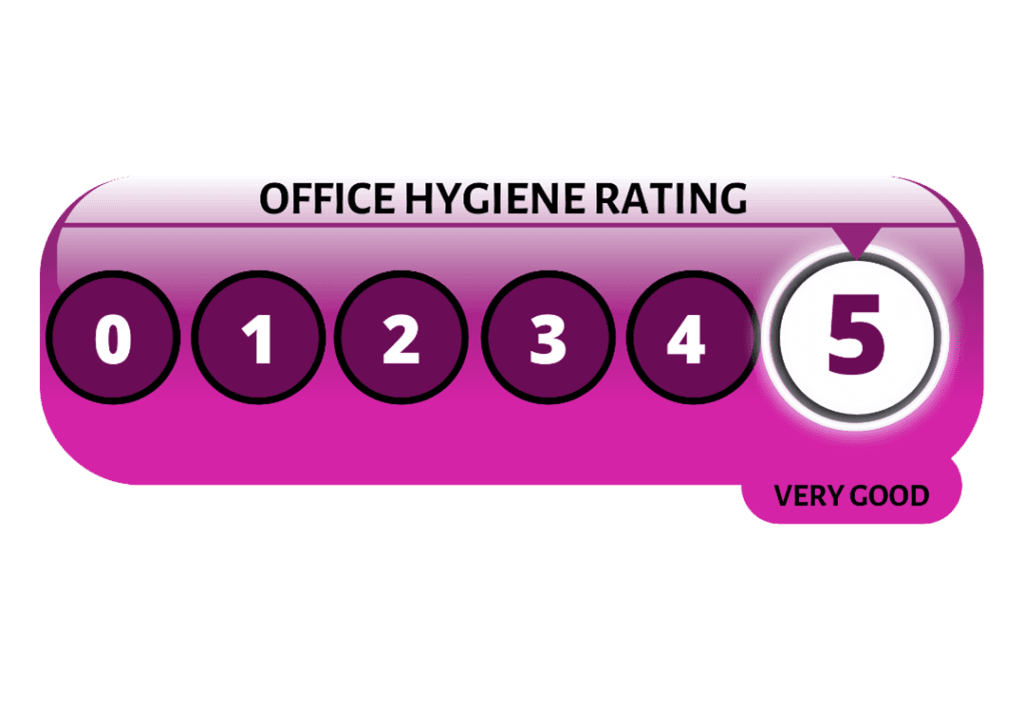
By: Nick Pollitt from Diamond Interiors

Many businesses have adopted the home working model permanently for a whole host of reasons: worries, anxiety, efficiency, and convenience, to name a few. Others have created a hybrid model with a mixture of office days and home working days which sees employees get the best of both worlds. Then there are companies that simply can’t work this way and need full-time office days. Whatever the approach, isn’t it time that workers can rely on accountability and some standardisation when it comes to safe, hygienic workplaces? Office hygiene ratings: yay or nay?
Preparing for another pandemic
As a manager myself, I see the worries staff have but struggle to communicate because they’re not sure how to address them. Some worry they come across as too paranoid and are just trying to get more days at home, but the concerns are still fresh. Even if the world wakes up tomorrow and finds that COVID-19 has vanished – it’s miraculously been defeated, who’s to say that another pandemic isn’t lurking around the corner?
What businesses can do to help with office hygiene and virus-safety
Employers have had to rethink their set-ups, policies and management styles. Lessons are still being learned to think about how businesses can adjust and how we can make workplaces safer. But a big concern is tackling the expenses that come with meeting government requirements; social distancing screens don’t come cheap. It’s good practice to have contingency plans in place for pandemics – actual policies and writings to show how a business is preparing. So having savings put away ready in case another one comes along to help things run smoother. When it comes to cleaning and hygiene, many shared buildings have cleaners that are scheduled to come in, but good hygiene should be tackled by employers directly. After all, it is our duty to make a healthy, safe working environment and we can do our part.
It can start with education. It’s so easy for employees to become complacent with hygiene and cleanliness, so by scheduling in training or meetings to go through protocols will be so beneficial. It also shows you are taking it seriously. It’s actually surprising we don’t already make it a priority, considering so many businesses lose money every year due to illnesses and absences from common flus and bugs.
We can provide hygiene kits for our workers as well as encourage them to bring in their own. We are already seeing hand sanitisers on desks with antibacterial wipes, and people should have the choice to wear masks or not (depending on the government rules).
How could office hygiene ratings work?
It could work like the food hygiene ratings which focus on a number of key areas. Offices are inspected to be given an overall rating out of five to indicate cleanliness. With offices, we could look at possibly five key areas:
- Office equipment – How clean is the office furniture? How often is it updated and maintained?
- Office design/layout – Are desks individual or shared? How much space are you giving workers? Is social distancing achievable?
- Kitchen hygiene – Is there a shared office kitchen? How is that maintained and cleaned?
- Toilets – Again, how frequently are they maintained and cleaned? Can you rely on them to be fully stocked?
- Promoting employee hygiene – Is there adequate sanitation in place? Have employees been trained in best hygiene practices and is that happening regularly and when new hires come on board?
Office hygiene ratings
Ratings could work like the food hygiene one with five grades:
0 (urgent improvements required) – Examples: unsanitary food storage, extremely poor kitchen hygiene, no regular safety checks, toilets unsafe for use, dirty outdated office equipment etc.
1 (major improvements needed) – Examples: Very unsanitary toilets, very few employee hygiene methods, unsanitary food storage, very poor office design layout, rare safety checks, outdated dirty equipment etc.
2 (still major room for improvement) – Examples: Unsanitary equipment, poor food storage, poor kitchen hygiene, few employee hygiene methods, poor office design, infrequent safety checks
3 (generally satisfactory, but some improvement necessary) – Examples: Satisfactory food storage, satisfactory kitchen hygiene, safe toilets, some employee hygiene methods, relatively frequent safety checks
4 (establishment deemed as safe place to work) – Examples: Clean and up-to-date equipment, safe food storage, good kitchen hygiene, safe office design, clean toilets, frequent safety checks
5 (excellent safety standards) – Examples: Very safe food storage, very clean toilets, daily safety checks, very safe office design, all equipment clean and up-to-date, all employee hygiene methods in place
If an inspector deems the workplace/office of high quality when it comes to these key areas of cleanliness and hygiene, then an office can take pride in a five-star hygiene rating, similar to the format of food hygiene inspections. It can even be a big selling point for recruitment.

Could we see more accountability for office hygiene in the future?
Currently, we have to take businesses at their word for good hygiene. We rely on them to organise regular cleaning and trust that they choose high-quality cleaning services, products etc. But considering that there are so many different types of bacteria that can lurk in the office and on surfaces causing a sweep of illnesses, wiping a workforce out, so why shouldn’t we have inspections and accountability in place? By having an office hygiene rating, businesses and employers will certainly put more effort into providing a cleaner, safer work set-up, which the whole country will benefit from. We shouldn’t be afraid of more transparency, especially now that we know how easy a pandemic can come around.


